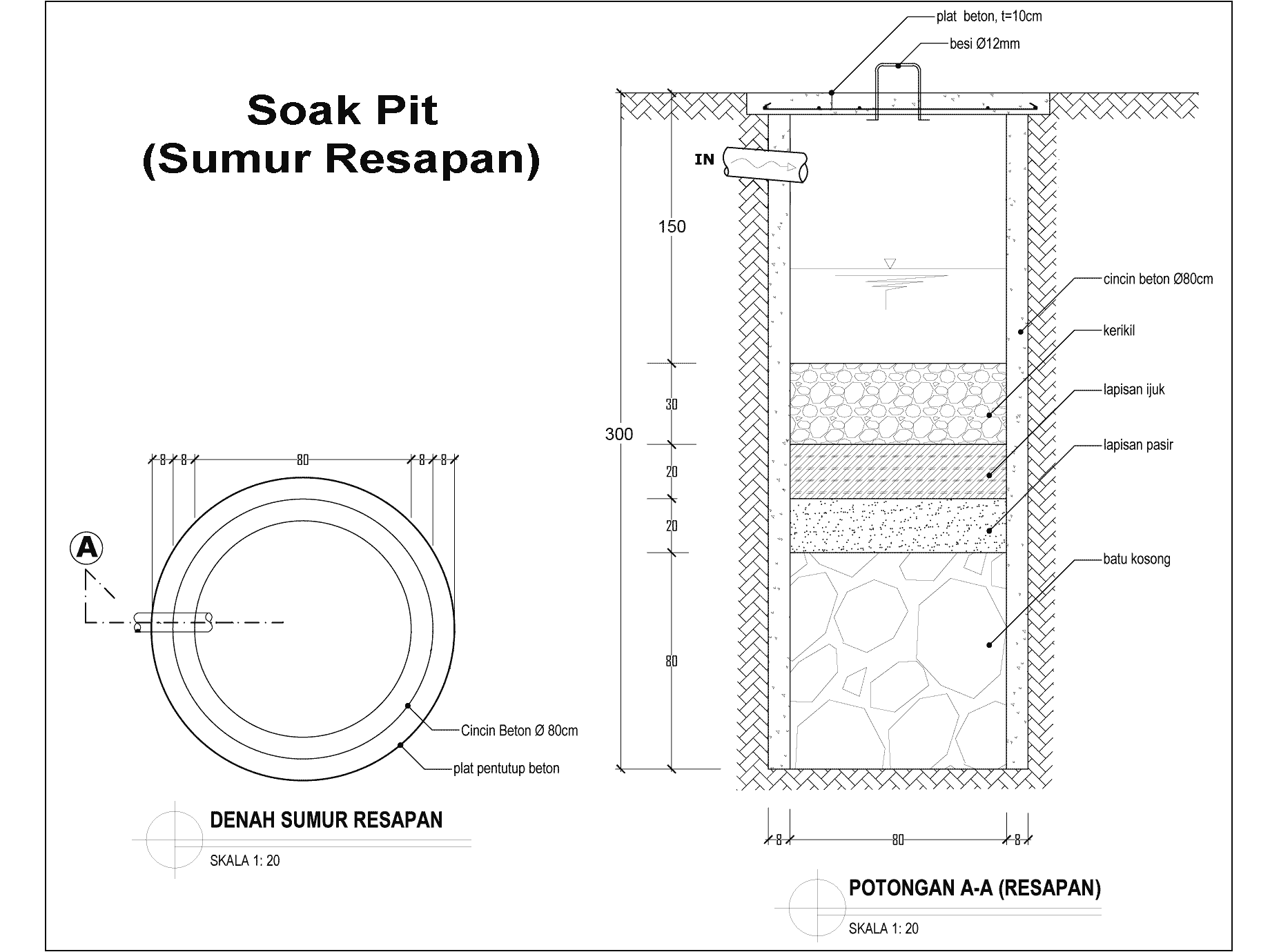Absorption Wells and Soak Pits
Drainage, Septic Tank Soak Away and Water Table Replenishment
An Absorption well also known as a soak pit or a Resapan (in Indonesian) has three main uses.
- To provide effective drainage for areas that flood.
- To provide a septic tank soak away where a drain field is not possible.
- To replenish the water table by absorbing rainwater into the ground.
What is an absorption well, how does it work and download an engineering construction drawing.
In many parts of the world a shortage of water is becoming and ever more serious problem. In Bali excessive removal of water from the water table combined with improved drainage that carries water directly to the sea is creating a looming disaster. What can we all do to use less water, replenish the water table and avert the impending water crisis?
Install an absorption well
To get the water back into the ground you can install a catchment well or soak pit (locally known as a "resapan"and also known as a rainwater catchment absorption well). An absorption well is a reverse well, a hole in the ground we put water into so it can seep away into the ground.
Engineering drawing of an absorption well
You can download an engineering drawing at: www.mrfixitbali.com/images/mrfixit-soak-pit.gif. NOTE that if the water is clean rainwater you do not need the filtration materials.
Low cost construction
An easily and cheaply built absorption well can be built by digging a hole in the ground and lining it using 1 metre diameter concrete rings. Depth is often about 3 metres although, of course, this depends on the ground. It needs to be deep enough to get into permeable ground so the water can soak away. The well can have a concrete top on it and so the whole construction can be buried.
What can we put in an apsorption well?
We can consider rainwater as pure water and we get it in large volumes so the absorption well can be a simple 1 metre diameter empty pipe able to hold as much water as possible. If one well isn't enough you can consider installing several. Simple drainage can collect the rainwater from your property and direct it to the absorption well.
You can also return lightly contaminated water, such as grey water from washing machines, washbasins and showers to the water table by sending it to a well with filtration materials installed. To filter the water we can fill the bottom 1.5 metres of the pit with layers of filtration materials. The design I give you here has four layers as follows:
- The bottom is filled with 80 cm of batu kosong (loose stones).
- On top of this we have a 20 cm layer of pasir (sand).
- On top of this a 20 cm layer of lapisan ijuk (coconut fibre as used for temple roofs).
- A final 30 cm layer of kerikil (coral stone).
It goes without saying that you must NEVER put unprocessed sewage into an absorption well, it MUST go into a properly designed septic tank or into the government sewer.
You might think there isn't enough space on your property to install an absorption well but you can always install one underneath the floor of your house. The well can be buried although it is a good idea to have an access manhole in the unlikely event that it needs maintenance such as blocked filtration layers.
Most of us live on land that was formerly rice fields and rice fields are lined with clay to hold water. Much of the developed part of Bali is on the flood plain between Sanur and Seminyak, an area where ricefields overlay sediments and (close to the beaches) sand. In former rice fields it is important to dig through the layer of clay so the water can soak away into the water table beneath.
Phil Wilson
Copyright © Phil Wilson May 2015
This article, or any part of it, cannot be copied or reproduced without permission from the copyright owner.

